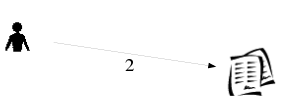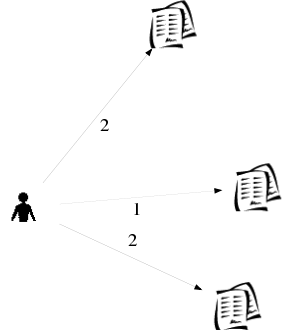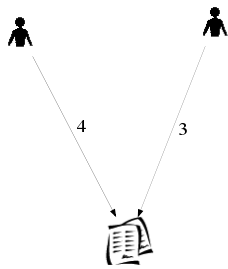Социальная структура
(→Средства выявления и анализа социальных структур) |
(→Значение социальной структуры) |
||
| Строка 20: | Строка 20: | ||
== Значение социальной структуры == | == Значение социальной структуры == | ||
| − | Показано, что социальная структура воздействует на поведение людей и таким образом влияет на экономические результаты системы | + | Показано, что социальная структура воздействует на поведение людей и таким образом влияет на экономические результаты системы. |
# Granovetter M. The Impact of Social Structure on Economic Outcomes // Journal of Economic Perspectives. 2005. Т. 19. № 1. С. 33–50. | # Granovetter M. The Impact of Social Structure on Economic Outcomes // Journal of Economic Perspectives. 2005. Т. 19. № 1. С. 33–50. | ||
| Строка 26: | Строка 26: | ||
| + | Как различные микроструктуры совместной деятельности будут воздействовать на результаты. Это пока такие обоснованные предположения. | ||
| + | Основания: | ||
| − | + | Social structure, especially in the form of social networks, affects economic outcomes for three main reasons. | |
| + | # First, social networks affect the flow and the quality of information. Much information is subtle, nuanced and difficult to verify, so actors do not believe impersonal sources and instead rely on people they know. | ||
| + | # Second, social networks are an important source of reward and punishment, since these are often magnified in their impact when coming from others personally known. | ||
| + | # Third, trust, by which I mean the confidence that others will do the “right” thing despite a clear balance of incentives to the contrary, emerges, if it does, in the context of a social network. | ||
| + | 1) Norms and Network Density. Norms—shared ideas about the proper way to behave—are clearer, more firmly held and easier to enforce the more dense a social network. (If a social network consists of n “nodes,” people, firms or other social units, “density” is the proportion of the possible n(n � 1)/ 2 connections among these nodes that are actually present.)1 This argument is one of the oldest in social psychology; for instance, see the classic account of Festinger, Schachter and Back (1948). It rests on the fact that the denser a network, the more unique paths along which information, ideas and influence can travel between any two nodes. Thus, greater density makes ideas about proper behavior more likely to be encountered repeatedly, discussed and fixed; it also renders deviance from resulting norms harder to hide and, thus, more likely to be punished. | ||
== Средства выявления и анализа социальных структур == | == Средства выявления и анализа социальных структур == | ||
Версия 11:18, 21 марта 2016
Содержание |
Определение
Социàльная структу́ра — совокупность взаимосвязанных элементов, составляющих внутреннее строение общества.
In the social sciences, social structure is the patterned social arrangements in society that are both emergent from and determinant of the actions of the individuals.
On the macro scale, social structure is the system of socioeconomic stratification (e.g., the class structure), social institutions, or, other patterned relations between large social groups.
On the meso scale, it is the structure of social network ties between individuals or organizations. On the micro scale, it can be the way norms shape the behavior of individuals within the social system.
На макроуровне социальная структура = структура общественной стратификации, принятые правила, общественные институты, отношения между большими социальными группами.
На среднем уровне социальная структура соответствует социальной сети связей между индивидуальностями или организациями.
На уровне совместной работы над документом социальная структура = структура социальных связей между участниками совместной деятельности.
A social network is a social structure made up of a set of social actors (such as individuals or organizations), sets of dyadic ties, and other social interactions between actors. The social network perspective provides a set of methods for analyzing the structure of whole social entities as well as a variety of theories explaining the patterns observed in these structures. The study of these structures uses social network analysis to identify local and global patterns, locate influential entities, and examine network dynamics.
Значение социальной структуры
Показано, что социальная структура воздействует на поведение людей и таким образом влияет на экономические результаты системы.
- Granovetter M. The Impact of Social Structure on Economic Outcomes // Journal of Economic Perspectives. 2005. Т. 19. № 1. С. 33–50.
- Jackson M.O., Rogers B.W., Zenou Y. The Economic Consequences of Social Network Structure. Rochester, NY: Social Science Research Network, 2016.
Как различные микроструктуры совместной деятельности будут воздействовать на результаты. Это пока такие обоснованные предположения.
Основания:
Social structure, especially in the form of social networks, affects economic outcomes for three main reasons.
- First, social networks affect the flow and the quality of information. Much information is subtle, nuanced and difficult to verify, so actors do not believe impersonal sources and instead rely on people they know.
- Second, social networks are an important source of reward and punishment, since these are often magnified in their impact when coming from others personally known.
- Third, trust, by which I mean the confidence that others will do the “right” thing despite a clear balance of incentives to the contrary, emerges, if it does, in the context of a social network.
1) Norms and Network Density. Norms—shared ideas about the proper way to behave—are clearer, more firmly held and easier to enforce the more dense a social network. (If a social network consists of n “nodes,” people, firms or other social units, “density” is the proportion of the possible n(n � 1)/ 2 connections among these nodes that are actually present.)1 This argument is one of the oldest in social psychology; for instance, see the classic account of Festinger, Schachter and Back (1948). It rests on the fact that the denser a network, the more unique paths along which information, ideas and influence can travel between any two nodes. Thus, greater density makes ideas about proper behavior more likely to be encountered repeatedly, discussed and fixed; it also renders deviance from resulting norms harder to hide and, thus, more likely to be punished.
Средства выявления и анализа социальных структур
Примеры сетевых структур, которые мы наблюдаем в совместной деятельности
Какие структуры у нас есть?
В результате совместной деятельности на поле возникают различные формы или структуры
Наблюдатели
Пустое поле - участники за пространством - участники за доской, вне доски - мы видим, что они есть, но никак себя не проявили. Это те, кто зарегистрировался и может быть заполнил профайл участника. Это игроки без мячика. У них и своего мячика нет, и с чужим они не играют. Посмотрите какие мячики уже есть на поле. Из того, что вы оцените чужой мячик уже что-то может получиться. Это - отсутствующая структура
Одиночки (человек с мячиком)
Одиночки-авторы
Как возникают
Как выглядят
Во что могут быть преобразованы
Одиночный автор, с которым связаны один или более созданных им объектов
Самая простая и самая распространенная фигура - участник создал свой объект и к этому объекту пока не подтянулись другие участники.
Это могут быть:
- авторы вики-статей
- авторы предложений по улучшению документов (wikivote!)
- авторы поста в коллективном блоге
- авторы документов внутри GoogleAppas
Графвиз:

Картинка
Человек с несколькими мячиками
Фигура - как продолжение предыдущей.
Что характеризует:
- У участника может быть множество связей с объектами, но его объекты никак не связаны с другими участниками.
- При переходе от биграфа к монографу - социальной сети, в которой буду только участники, мы получаем одиночку.
- Как мы может направлять действия участников из этой группы
- Вы создали несколько предложений, но они пока остаются без ответа. Возможно лучшей стратегией будет взаимодействие с такими же авторами как Вы.

Группа взаимодействия
Пока такая расплывчатая формулировка, потому что сюда попадает несколько вариантов.
Пара
Распространенная фигура на поле совместной деятельности:
В паре всегда есть первый автор, создавший объект деятельности и есть присоединившийся к автору участник, который выполняет действия над уже существующим объектом:
- редактирует статью (вики)
- редактирует документ (GoogleApps)
- комментирует пост в блоге
- оценивает/комментирует предложение (см. WikiVote)
При переходе от биграфа к однодольному графу образует однонаправленная связь от субъекта A к субъекту Б.
Для пары коэффициент кластеризации подсчитать нельзя.

Группы поддержки
Крупные компоненты
Связующие (ключевые игроки)
см. https://www.cmu.edu/joss/content/articles/volindex.html JOSS
см. Гемофильность



